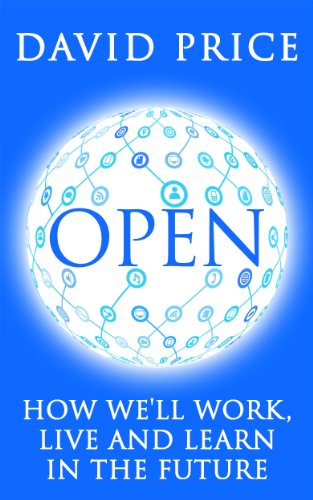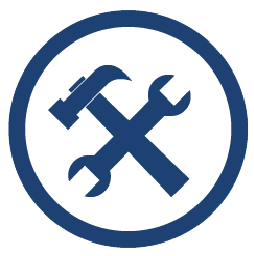Module 4 - Section 3
Personal Learning Environments and Personal Learning Networks
Thinking about the various digital spaces that we visit and reside in both in our personal lives and our professional and work lives. We’re now going to explore some of these spaces and tools and technologies in the context of learning.
We’ve spent some time thinking about the various digital spaces
that we visit and reside in both in our personal lives and our
professional and work lives. We’re now going to explore some of
these spaces and tools and technologies in the context of
learning.
If we go back 20 or 30 years most learning and training was
delivered in physical classrooms and training suites. We had to
visit libraries to look for books or journals. Distance learning
programmes involved masses of photocopying and posting our binders
of paper resources. The internet has changed all of that.
We can deliver learning online, deliver teaching through online
classrooms and webinars, work collaboratively online, access books
and articles online and share content, videos, images and more
through a wide range of social media channels.
It’s also easier than ever to publish and share content. Blogging
platforms such as WordPress and Blogger have made it easy to
publish open content on any subject, whilst YouTube and Vimeo
enable quick and easy sharing of video content. Flickr has done
the same for publishing images and illustrations. Meanwhile
presentation slide-decks are published to Slideshare and 3D models
to Sketchfab. This content can be auto-broadcasted through
Facebook, Twitter, Instagram. Readers and viewers can subscribe to
new postings, comment and provide feedback and also reshare and
curate content thereby bringing added value through highlighting
relevance to specific contexts. The utility of embed codes enables
content to be re-published elsewhere on the web. Creative Commons
licencing also makes it easier to reuse, remix and repurpose
different types of media content. Tagging content with hashtags
(#), i.e. a descriptive keyword or short phrase on Twitter, also
helps conversations to develop and individuals to connect and
build networks across geographical boundaries.
Collectively the spaces that we learn in and the tools that
support our learning form our personal learning environment whilst
the individuals and the information nodes we learn from form our
personal learning networks. We’ll now move on to look at these
concepts in further detail.
Personal Learning Environments
Essentially we can learn anywhere, anytime, any place. We can
learn in physical and digital spaces. Our learning can be
mediated by a wide range of individuals, we can search for
information, make sense of it and then share it with others. As
we share it we can add value by sharing our own insights and
experiences. For many this has been possible because they’ve
increasingly made use of social media tools to support their
learning or started to use some of the social tools in
organisational tools such as Microsoft Yammer and Teams. A lot
of this learning can be personal self-organised learning that
happens on the job in the flow of what we’re doing or whilst
we’re trying to problem solve. Within organisations it’s also
possible to design learning approaches that foster this type of
learning and to provide the scaffolding to help individuals
connect to others and to signpost to curated collections of
learning resources.
How we use different technologies and engage in different
physical and online spaces is highly personal. We all develop
our own personal learning environments (PLE) and these can
change and evolve over time and through different phases of our
lives. Here’s an illustrative example of a PLE. Do an image
search to find other examples of PLEs.

Your Personal Learning Environment
Read “Personal Learning Environments and the Future of eLearning” by Graham Attwell. Although this paper was written in 2007 it provides a helpful overview of the concept of the personal learning environment (PLE) and how technology is informing the development of new ways of learning and connecting. This paper was written the same year the first iPhone was released, which you could argue was the catalyst for transforming our access to learning particularly to support informal and just-in-time learning. Smartphones have become ubiquitous, enabling us to access information at our fingertips 24/7.

Activity 4
Blog
Consider the following questions and record your answers on your blog You could also have a go at drawing your own PLE. Think about how your PLE has evolved over time and how it supports your learning.
- The spaces that you learn in, both the physical and the virtual.
- The tools and resources that you use, are these provided by the organisation you work for or do you use them to support your own personal and self-directed learning. Do you use tools that are open and free to use or are they paid for or closed and restricted access.
- How do you record and reflect on your learning, do you use a notebook, do you create sketch notes, do use any digital tools or apps to organise and file resources that support your learning?
- Do you share what you’ve learned? Perhaps in team meetings, conversations with colleagues? Do you share your learning through social networks, blogs or online forums?
Personal Learning Networks
We’ve considered the various spaces, tools, technologies and devices
that support your learning but what about the people that support
your learning. Learning is a social activity and other people help
us to learn through shared experiences, through role modelling,
coaching, mentoring. We learn from others in the teams that we work
in, from communities of practice and wider networks of people that
we connect with. So just as we have a PLE each of us also have a
personal learning network (PLN).
Watch this video which gives an overview of a PLE in the context of
a healthcare professional in Scotland.
Your Personal Learning Network
This activity is designed to help you begin to think about your own personal learning network (PLN) who you engage with and to think about the range of individuals that support your learning and whether there might be some gaps that you could start to fill.
Mapping Your PLN
To help you start have a think about the following and see if you can identify 3 or 4 people for each category but don’t worry if you can only identify 1 or 2. It may also be that the same names come up in more than one of the categories.
- Who are the people with whom you most frequently discuss work/professional issues that are important to your practise?
- Who are the people with whom you most frequently communicate to get things done at work?
- Who are the people you contact when you have a complex problem that you’re trying to solve?
- If you are starting a new project, who are the people that you need to consult, get support and advice from or approval from?
- Who do you connect with to find out about the latest developments in your work.
- Who would you speak to for career advice.
Once you have your names begin to think about the make-up of this group of individuals. For example think about
- Their age - are they older or younger than you, or around the same age? If they’re older or younger how big is the age gap?
- Location - are these individuals in the same team/department as you, in another department. Are they located in another office of your organisation in another town. Are they external to your organisation?
- Is their level of expertise the same as yours or different? Are different areas of expertise represented in your PLN?
- Are they the same gender as you?
- What’s the hierarchical position - are they the same level as you or below or above you in your organisation's hierarchy?
- Their geographical location - are they in the same office, a different office, different city, different country?

Activity 5
Blog
In your blog note down your reflections on the composition of
the people that you have started to map your PLN. Are there any
surprises? Are there are other people that you need to add.
Think about how you communicate and interact with these
individuals, what channels do you use, how often do you interact
with them face-to-face. Are there any that you only ever connect
with virtually?
Are there any gaps in your PLN that you’d like to fill? Can you
think of strategies to fill those gaps?
In addition to people are there other elements to your PLN? For
example are there blogs that you read regularly or online groups
or forums that you visit or are resident in that also support
your learning.